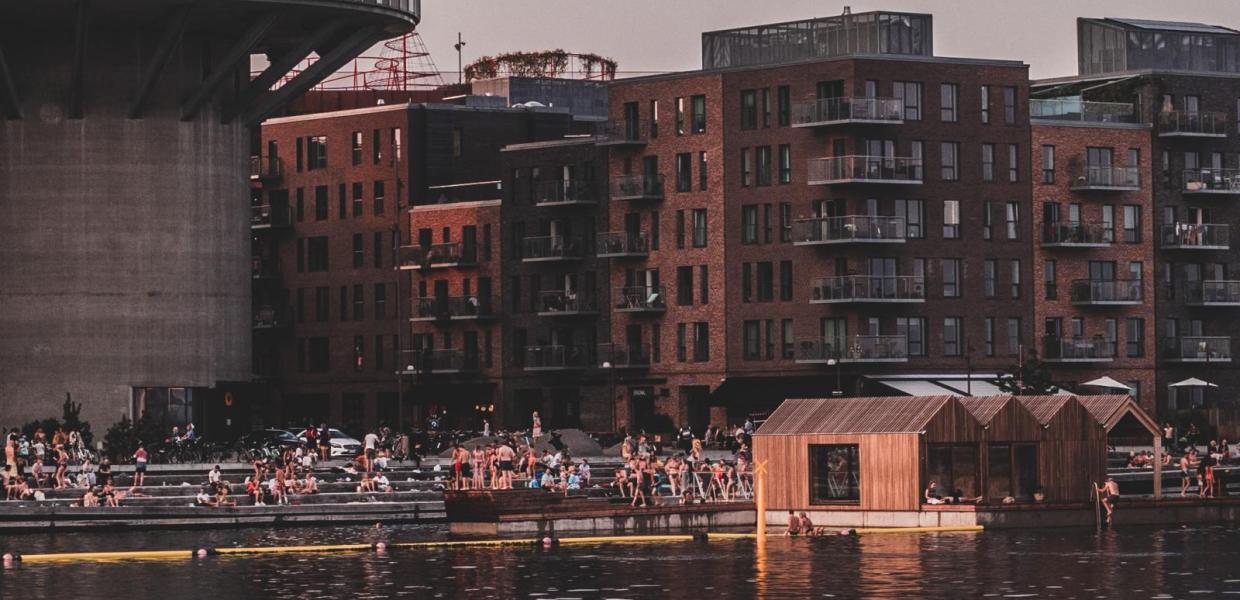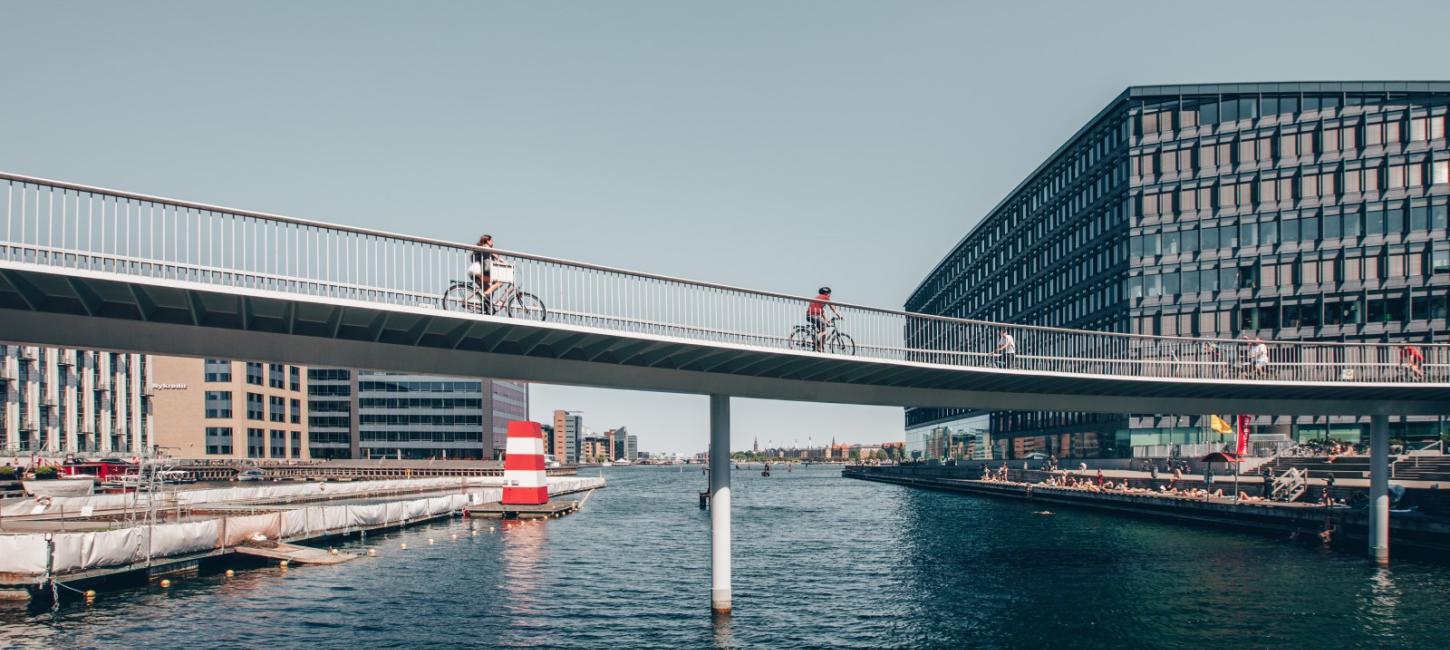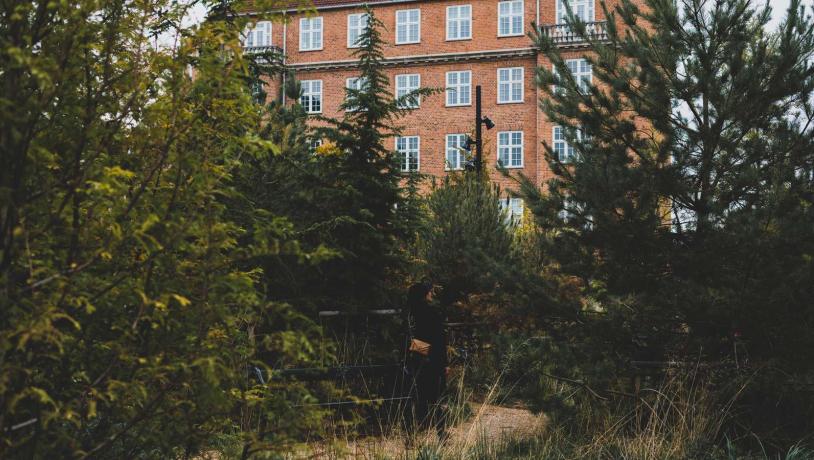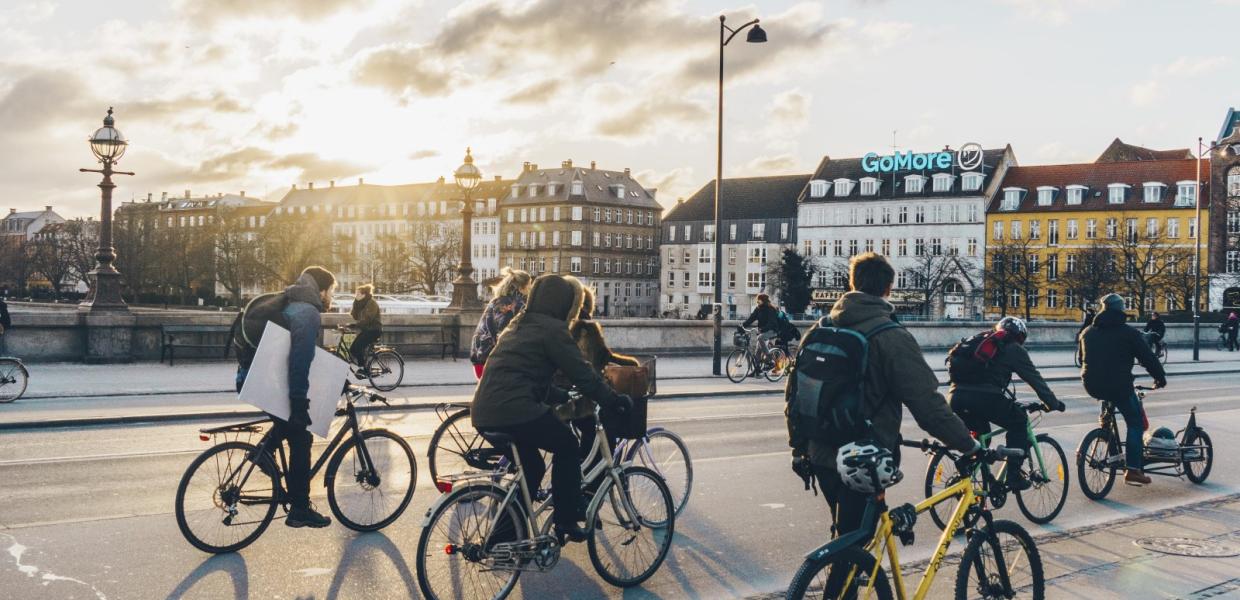How Copenhagen is pioneering in sustainable urban development
Water, light, green spaces and innovative thinking are key elements in Copenhagen’s architectural development and some of the ingredients that combine sustainable actions with a high quality of life.
Whether it is new bike routes, urban parks, new residential areas or inclusive public spaces, Copenhagen is on an architectural forefront and constantly preparing for a more sustainable future while satisfying locals’ needs.
There are countless ways to explore Copenhagen’s sustainable urban planning firsthand. Here are some of them.

En lækker sommerdukkert i Nordhavns havnebad Sandkaj, som åbnede i sommeren 2018.Bilde:-
Nordhavn: the sustainable waterfront neighbourhood
A recent mega project exemplifying the green transition in Copenhagen is the city’s new neighbourhood, Nordhavn located in the northern part of the harbour.
Nordhavn is among the largest and most ambitious urban development projects in Northern Europe when it comes to sustainability.
State-of-the-art knowledge from all over the world has contributed to making it the sustainable city of tomorrow by working in the intersection of architecture, buildings, infrastructure, energy and not least - the needs of the residents who call this modern part of town home.
Sankt Kjelds square is part of the climate adapted neighbourhood in Østerbro and a textbook example of how architecture and urban development can go hand in hand with sustainable living. Bilde:Mellanie Gandø
Rich fauna and landscaped streets as a part of the solution
Greener streets, florid courtyard gardens, rich fauna and landscaped streets that carry the rain from heavy rainfalls away and down to the harbour. That are some of the benefits for the residents of the new climate-resilient Sankt Kjelds neighbourhood in Østerbro. The project also serves as a concrete example of how urban planning in Copenhagen combines climate solutions with recreational benefits for locals – not as a bonus or side-effect but as an integral part of the solution.
The first bike city in the world – and the best
Life in Copenhagen is lived in the saddle, and that’s not just because biking is fun. It’s the logical choice in a city built for bikes and several times named the world’s best bike city. Since the 1960’s, urban mobility in Copenhagen has centered around biking as a smart, safe and healthy way of getting from A to B.
Today, you’ll find designated bike lanes pretty much everywhere, and 49% of Copenhageners commute to studies and work by bike.
Source: Copenhagen Municipality.
Rent a bike while you’re here and do like the locals. Simply because it makes sense and is the best way to explore the entire city.
The world’s most sustainable building project
Besides the green spaces and clean harbour, another example of nature’s presence in Copenhagen can be experienced in the Ørestad area. This area on the edge of the nature reserve Amager Commons has experienced an architectural development for 25 years which is finally concluded with no less than the world’s most sustainable housing project.
The sustainable architectural firm Lendager Group is behind the UN17 Village – 400 new homes in one building project that translates all 17 of the UN’s Sustainable Development Goals (the SDGs) into a physical project. The first housing project to do exactly that.
Pioneering sustainability solutions and commitment to the 17 SDGs were the decisive factors securing Lendager Group’s bid to design the UN17 Village – 400 new homes in Copenhagen, Denmark. The contest marks the end of 25 years of development, completing the new city district, Ørestad South.


